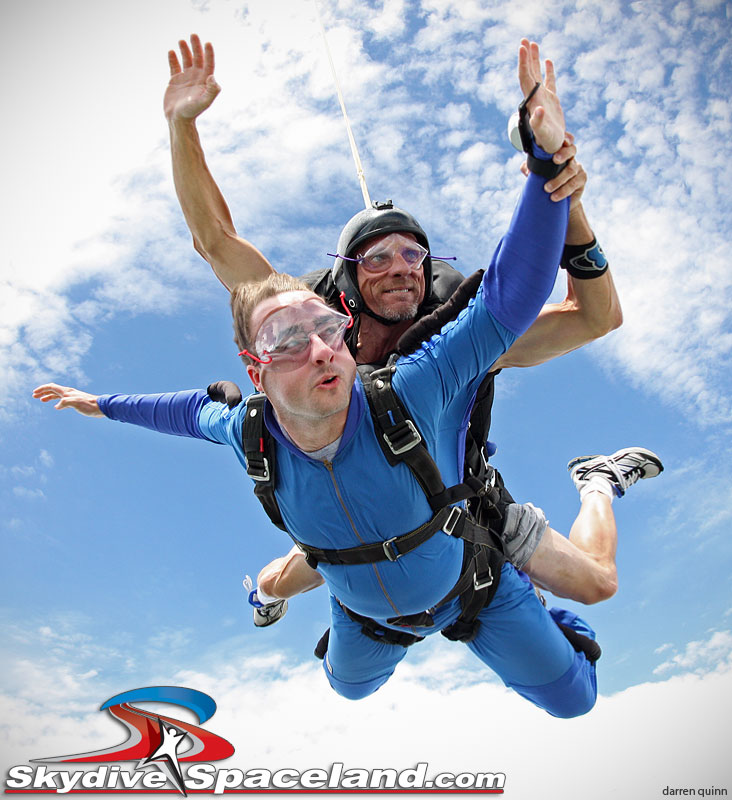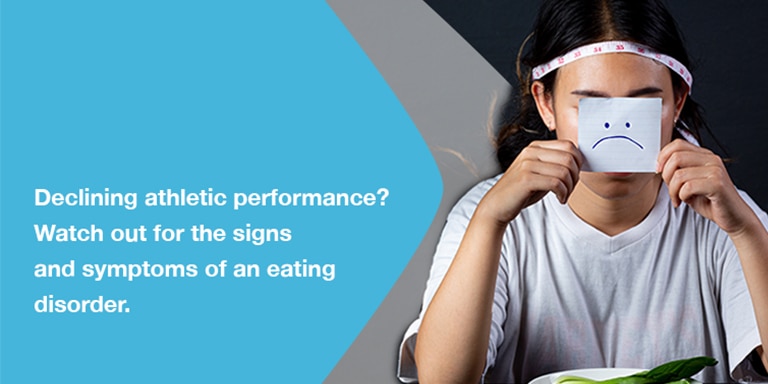Picture this: a group of athletes lined up at the starting line, muscles bulging, determination etched on their faces. But hidden behind their competitive exteriors lies a secret struggle – a battle with food, body image, and self-worth. Yes, even the seemingly invincible athletes among us can fall prey to the grips of eating disorders. In this article, we’ll dive into the world of “Eating Disorders in Athletes: Awareness and Prevention” and explore how we can help our fellow warriors conquer their inner demons while still dominating on the field. So grab a protein shake and let’s lace up our sneakers for a wild ride through the world of athletic-geared eating disorders. Let the games begin!
Contents
- 1 Common Eating Disorders Among Athletes
- 2 Risk Factors for Developing Eating Disorders in Athletes
- 3 Signs and Symptoms to Look Out For
- 4 The Impact of Eating Disorders on Athletic Performance
- 5 Prevention Strategies for Coaches and Athletes
- 6 Importance of Seeking Help and Support for Recovery
- 7 FAQs
- 8 —
- 9 Stay Healthy, Stay Strong
Common Eating Disorders Among Athletes
Athletes are no strangers to pushing their bodies to the limit, but sometimes this can lead to the development of eating disorders. Here are a few common eating disorders that athletes may experience:
- Orthorexia: This is when athletes become obsessed with eating only “clean” foods and adhering to strict dietary rules. Forget about enjoying a slice of pizza with the team after a game, these athletes are weighing their kale portions and measuring out their quinoa. It’s all about those #gains, bro.
- Binge Eating Disorder: On the flip side, some athletes may struggle with binge eating, especially after a tough competition or when dealing with performance pressure. You know you’re in trouble when you’re on a first-name basis with the delivery guy from the local burger joint.
- Compulsive Exercise: For some athletes, the obsession with burning calories and staying in shape can lead to compulsive exercise. These are the folks who are hitting the gym at 4 am, running marathons on their rest days, and doing squats while brushing their teeth. Ain’t nobody got time for rest days!
It’s important for athletes to remember that fueling your body properly is essential for peak performance. So go ahead, have that slice of cake at the team celebration and remember to take rest days seriously. Your body will thank you in the long run.

Risk Factors for Developing Eating Disorders in Athletes
It’s no secret that being an athlete comes with its own set of challenges and pressures. But did you know that athletes are at a higher risk for developing eating disorders? Here are some factors that could contribute to this dangerous trend:
- Body Image Obsession: Athletes are constantly under scrutiny for their physical appearance, leading to an unhealthy obsession with their bodies.
- Pressure to Perform: The constant pressure to excel in their sport can lead athletes to resort to extreme measures to control their weight.
- Dieting Culture: Many athletes are surrounded by a culture that emphasizes restrictive eating habits and extreme dieting.
Trying to be a top-performing athlete while also battling an eating disorder is like trying to run a marathon with a backpack full of rocks. It’s a heavy burden to carry and can severely impact both physical and mental health. Athletes should be encouraged to focus on nourishing their bodies properly and seeking help if they feel overwhelmed.
In a world where six-pack abs and thigh gaps are glorified, it’s easy for athletes to fall into the trap of disordered eating. But it’s important to remember that being healthy and strong is what truly matters, not fitting into a mold created by society. Athletes should be celebrated for their strength and dedication, not their waist size.
Signs and Symptoms to Look Out For
Feeling like you’re coming down with something? Here are some weird and wacky signs and symptoms to keep an eye out for:
- Seeing a unicorn prancing through your living room
- Hearing your plants whispering secrets to each other
- Developing a sudden craving for pickles and ice cream at 3am
While these may sound far-fetched, you never know what kind of odd symptoms your body might throw at you. Remember, it’s always better to be safe than sorry!
Keep an eye out for any unexplained rashes, mysterious bumps, or inexplicable itches that seem to come and go at their own free will. Your body might just be trying to tell you something in its own strange way!
- Feeling like your insides are doing the cha-cha-cha
- Suddenly understanding the language of birds
- Not being able to stop binge-watching cheesy rom-coms

The Impact of Eating Disorders on Athletic Performance
Have you ever tried running a marathon on an empty stomach? No? Well, I have, and let me tell you, it’s not pretty. Eating disorders can wreak havoc on an athlete’s performance, leaving them weak, fatigued, and unable to reach their full potential.
When you’re obsessing over every calorie you consume, it’s hard to focus on the game. Your mind is preoccupied with thoughts of food and weight, rather than on the task at hand. This can lead to poor decision-making on the field and sluggish performance overall.
Not only does disordered eating affect your physical performance, but it can also take a toll on your mental health. Feeling guilty or anxious about food can cause added stress, which can negatively impact your confidence and ability to stay focused during a game.
So next time you think about skipping a meal or restricting your intake, remember that it’s not just your health at stake – it’s your game too. Fuel your body properly, and watch your performance soar to new heights!

Prevention Strategies for Coaches and Athletes
When it comes to staying healthy and injury-free, coaches and athletes need to be proactive in implementing prevention strategies. Here are some fun and effective tips that will keep you in top form:
A> Warm-up and cool-down routines: Don’t skip these crucial steps before and after your workouts. A good warm-up gets your muscles ready for action, while a cool-down helps prevent stiffness and soreness.
B> Cross-training: Mix it up and try different types of exercises to prevent overuse injuries. Whether it’s swimming, cycling, or yoga, variety is the spice of life (and injury prevention).
C> Proper equipment: Make sure you have the right gear for your sport. From shoes to protective padding, having the proper equipment can help prevent unnecessary injuries.
D> Listen to your body: Don’t ignore those little aches and pains. Your body is trying to tell you something, so it’s important to pay attention and address any issues before they become more serious.
Importance of Seeking Help and Support for Recovery
Don’t Go at it Alone!
Recovery can be a challenging journey, but you don’t have to face it alone. Seeking help and support from others can make a world of difference in your recovery process. Here’s why:
- Motivation: Surrounding yourself with supportive people can help keep you motivated on your path to recovery. Whether it’s friends, family, or a support group, having a strong support system can boost your spirits and keep you going.
- Accountability: When you have someone holding you accountable, it’s harder to slip up. Whether it’s a friend checking in on you or a counselor guiding you, having someone to answer to can help keep you on track.
- Advice and Guidance: Sometimes, we all need a little bit of help figuring things out. Seeking support from others can provide you with valuable advice and guidance on how to navigate the challenges of recovery.
So, don’t be afraid to reach out for help and support. Remember, it’s okay to ask for help – we all need a little support sometimes!
FAQs
Why do athletes tend to be more prone to developing eating disorders?
Well, when you’re constantly being judged on your performance, body image can become a big deal. Plus, all that pressure to be the best can really mess with your head and your relationship with food.
How can coaches and teammates help in preventing eating disorders among athletes?
First of all, ditch the “no pain, no gain” mentality. Encourage balance and self-care instead of pushing your athletes to extremes. And most importantly, be a good role model when it comes to healthy eating habits.
Are there any warning signs to look out for in athletes who may be struggling with an eating disorder?
Absolutely! Keep an eye out for sudden weight loss, obsessive calorie counting, and avoiding social situations that involve food. If your teammate starts exhibiting any of these behaviors, it’s time for a heart-to-heart.
What are some resources available for athletes seeking help for an eating disorder?
There are plenty of resources out there, from therapy to support groups to nutritionists who specialize in working with athletes. Don’t be afraid to reach out for help – you’re not alone in this!
How can athletes work on developing a healthier relationship with food and their bodies?
Start by listening to your body’s hunger cues and fueling it properly for your performance. Remember that food is fuel, not the enemy. And most importantly, be kind to yourself – you’re doing amazing things with your body!
—
Stay Healthy, Stay Strong
As athletes, we push our bodies to the limit every day. But remember, taking care of your mental health is just as important as taking care of your physical health. Don’t let eating disorders sneak up on you like a sneak attack from an opponent. Stay aware, stay informed, and stay strong. And if you ever need support, remember that your team is always there for you – on and off the field. Keep eating smart, keep training hard, and keep kicking butt. You got this!








Leave A Comment